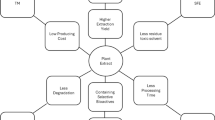Abstract
The water-insoluble procedures in US Pharmacopeia (USP) General Chapter Residual Solvents <467>, which are based on European Pharmacopoeia procedures, were optimized and modified before their inclusion in the chapter to improve their scope, performance, and ruggedness. The optimized procedures use a static headspace introduction system with a gas chromatograph equipped with a flame ionization detector. This article describes some of the key changes made to the USP published procedures, including use of dimethyl sulfoxide (DMSO) or dimethylformamide (DMF) as the solvent, addition of 5 mL of water and 1 mL of sample (dissolved in DMSO or DMF) to the headspace vial, use of a 3:1 GC split ratio, and use of new matrix-matched system suitability solutions. These procedures were verified with two different active pharmaceutical ingredients—hydroxyzine pamoate and prednisone. In the investigation, the more polar material (hydroxyzine pamoate) showed greater recoveries for the optimized procedures when prepared in DMSO. The less polar material (prednisone) typically had greater recoveries in DMF for the optimized procedures. During experimentation, insights into sample preparation, additional types of headspace instrumentation, solvent purity, and other parameters were also gained.




Similar content being viewed by others
References
USP. US Pharmacopeia 32–National Formulary 27, Residual Solvents <467>, Supplement 1. Rockville, MD: USP; 2009:3948.
USP. US Pharmacopeia 22–National Formulary 17, Organic Volatile Impurities <467>, Supplement 3. Rockville, MD: USP; 1990:2395.
ICH. Harmonised Tripartite Guideline Q3C(R3), Impurities: Guideline for Residual Solvents. 1997. www.ich.org/LOB/Media/MEDIA423.pdf. Accessed 04 May 2010.
EMEA. European Pharmacopeia, 5.4 Residual Solvents. Strasbourg: EMEA; 2009:50400.
EMEA. European Pharmacopeia, 2.4.24 Identification and Control of Residual Solvents. Strasbourg: EMEA; 2009:20424.
USP. US Pharmacopeia 32–National Formulary 27, General Notices and Requirements Section 5.60.20, Supplement 1. Rockville, MD: USP; 2009:6.
FDA. Guidance for Industry: Residual Solvents in Drug Products Marketed in the United States. 2008. http://www.fda.gov/OHRMS/DOCKETS/98fr/FDA-2008-D-0413-gdl.pdf. Accessed 04 May 2010.
Skoog DA, West DM, Holler FJ. Fundamentals of analytical chemistry. 5th ed. Philadelphia: Saunders College; 1988.
Schmidt TC. Analysis of methyl tert-butyl ether (MTBE) and tert-butyl alcohol (TBA) in ground and surface water. Trends Anal Chem. 2003;22:776–84.
USP. Residual Solvents <467> Pharm Forum. 2006;32(2):277–86.
Author information
Authors and Affiliations
Corresponding author
Rights and permissions
About this article
Cite this article
Belsky, J.L., Ashley, A.J., Bhatt, P.A. et al. Optimization of the Water-Insoluble Procedures for USP General Chapter Residual Solvents <467>. AAPS PharmSciTech 11, 994–1004 (2010). https://doi.org/10.1208/s12249-010-9460-6
Received:
Accepted:
Published:
Issue Date:
DOI: https://doi.org/10.1208/s12249-010-9460-6




